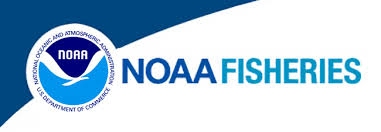
The National Oceanic and Atmospheric Administration (NOAA) includes a division known as the “National Marine Fisheries Service” or NMFS. This division is also known as NOAA Fisheries (http://www.nmfs.noaa.gov/). One of the functions of NMFS is the responsibility for protecting endangered and threatened marine life.
Dr. Lisamarie Carrubba is a scientist working in the Boqueron, Puerto Rico, office of NOAA Fisheries. Her division was requested by the US Fish and Wildlife Service to provide a “Section 7 Endangered Species Act consultation” regarding the possible impacts of the Summers End Group marina project on threatened and endangered marine species. Some of the most relevant points made by Dr. Carrubba include the following:
“After reviewing the information that accompanied the consultation request and the information in the public notice, as well as the Environmental Assessment Report (EAR) prepared for the project, we continue to be unable to determine the potential extent of project impacts to ESA resources. Specifically, we continue to request the following information in order to proceed with the ESA Section 7 consultation for the project:
… sea turtles are known to use Coral Bay and areas along the most common transit routes to and from the bay proposed as part of this project but, despite several requests, no sea turtle surveys have been conducted for the project.
… details of pile driving and quantification of potential acoustic impacts to sea turtles given that 1,333 piles will be driven in order to construct the proposed facilities
… current data for Coral Bay, including tidally influenced and wind driven transport patterns, as well as patterns during large storms such as hurricanes and tropical storms
… details of the anticipated transit locations of users of the marina and mooring field to determine the potential extent of impacts to ESA resources due to the introduction of up to 235 new vessels to the area given the locations of ESA listed corals, acroporid coral critical habitat, and habitat for ESA listed sea turtles, as well as the presence of ESA listed sea turtles in relation to the proposed project and likely transit routes and use of different areas around St. John”
The full text of Dr. Carrubba’s comment letter to the Army Corps of Engineers is shown below:
